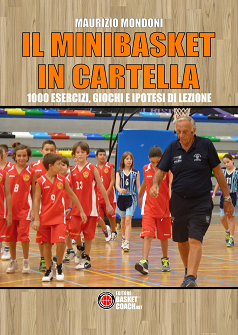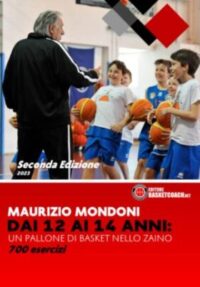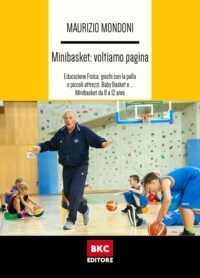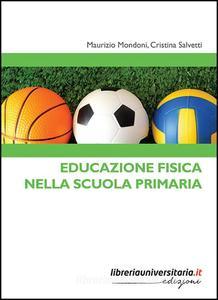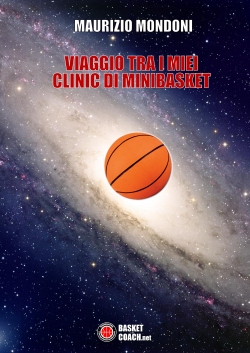My Minibasket Philosophy (part 1)
MINIBASKETBALL AND BASKETBALL: GENERAL GUIDELINES
Preamble
Sports training for children are a very timely issue as starting at this age is a last considered to be a fundamental factor for the continuation of sports activities at a later stage.
The different methods and types of preparation for sport, lay the foundation for the children’s future participation in sports.
Starting sports at an early age, does not mean an “early specialization”.
Rather, it means showing the children all of the motor abilities of their bodies with respect to space, time, and the objects they play with, the rules of the game, the referee and their opponents.
Unfortunately, recent years have been marked by an early specialization and as sports become more and more widespread, competitions have become more intense and the age limits for participation in competitions have been lowered.
Children have been trained from the beginning to achieve the highest possible results.
This has led to an exaggerated training, the search for champions at an early age, and the need to win at any cost.
The way to avoid the negative repercussions of this trend, which often leads children to drop out of sports training programs and undermines both the development of future champions and sports education as a whole, is to reorganize the elements and contents of sports preparation programs for youngsters.
The coach must view as individuals rather than as objects children.
The coaches must not drive practice periods too hard, but, on the contrary, he has to try to respond to the needs and motivations of the children, and curb competition-related anxiety and stress.
Sports activity must be considered as an element of the overall education of the person.
These remarks point out the need for a broader outlook on the introduction of children to sports and a training period stretching over several years.
Spacing goals over several years (programming) makes it possible to consolidate basic motor patterns, educate and gradually develop motor skills, and teach correct execution of specific skills, without overlooking the overall growth of the person. This will include several stages:
– stage 1°: multilateral preparation (6-12 years);
– stage 2°: beginning of sport specialization (13-15 years);
– stage 3°: continued specialization (16-19 years);
– stage 4°: advanced sport specialization (over 19 years).
These stages are not to be considered rigidly, and exception will depend on the characteristics of the different sports disciplines and the discrepancies that often exist between the biological and chronological ages of the subjects.
To ensure a harmonically development of general and specific motor skills, it is important that the workloads be carefully planned, with correct amounts of general and specific preparation.
The ratio of preparation must be proportional to the ages of the subjects, their sex, the different phases in the education and development of motor skills, and the type of sports being practiced.
Although a lot of coaches know all there is to know about the sport they are teaching, not all of them know how to transmit this knowledge or how to establish a dialogue with their pupils and do not know the correct teaching method.
Education is not longer confined to the transfer of knowledge from one individual to another, rather it is a continuous dialogue that first creates, then renews and develops the teacher-pupil relationship.
Play, together with competitive spirit, is one of an individual’s primary motivations.
Play represents the keystone of motor education.
Play must be motor activity and motor activity must be play.
Play goes through the following phases:
– exploration (functional pleasure);
– symbolism (pretending);
– rule making;
– play-sport;
Pre-sporting and sporting games refer to individual and team sport.They are games that educate the sensory-perceptive capacities, motor and postural patterns, motor abilities and skills (general and specific), accustom children to the qualities of cooperation and loyalty and strengthen their character and personality.
There are many collective game-sports using a ball, including:
– Minibasketball
– Minivolleyball
– Minifootball
– Minihandball
– Minirugby
1°STAGE: multilateral preparation
MINIBASKETBALL (6-12 years)
Minibasketball is a team game-sport educational, using a ball, and is situational, acyclical, symmetrical and mixed-type (alternate aerobic-anaerobic). Playing Minibasketball, a child educates his sensitive-perceptive abilities, motor and postural pattern, socializes, communicates, measures his own abilities, controls himself, he enjoys; he learns the fundamentals of basketball.
2°STAGE: beginning of sport specialization (13-15 years)
Our proposal for a correct program (13-15 years) age bracket, takes into account the work which was carried out previously, both general and specific.
When planning, it is important to consider both the boys and girls who have played Minibasketball in previous years and those who have not. The proposals will, therefore, be in different contents and the coach will aim to continue the work previously carried out, but also be ready to start from scratch if the youngsters have not participated in any motor or sports activities previously.
3° STAGE: continued specialization (16-19 years)
Physical conditioning exercises with the ball are part of the coach’s required skills. Physical conditioning exercises with the ball will improve ball-handling, increase execution speed, improve peripheral vision and specific movements for basketball. The fundamentals must be analyzed and improved and there will be a gradual progression to the idea of teamwork in offence and in defence.
4° STAGE: advanced sport specialization (over 19 years)
Physical conditioning exercises with the ball are part of the coach’s required skills (ball-handling, stretching, work with weight). The fundamentals must be analyzed to obtain new ideas in offence and in defence.
—————————————
ALTRI ARTICOLI GIA’ TRATTATI SUL BLOG NELLE CATEGORIE. CLICCA SULLE CATEGORIE PER LEGGERLI.
TECNICA
ESERCIZI
COMUNICAZIONE
SCUOLA E MINIBASKET
MINIBASKET NEL MONDO
PEDAGOGIA
FISIOLOGIA
VIDEO
SCARICA GRATIS LA MIA DISPENSA L’ALLEDUCATORE
Vi ricordo che potete iscrivervi alla mia newsletter gratuita, per restare sempre aggiornati sul #minibasket a misura di bambino. In regalo la dispensa l’Alleducatore.
Prof. Maurizio Mondoni
#iostoconibambini
#alleducatore
#minibasket
